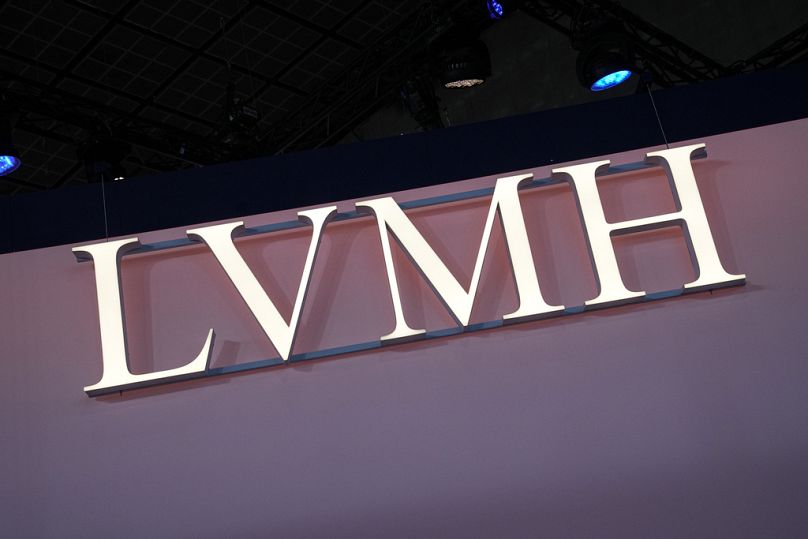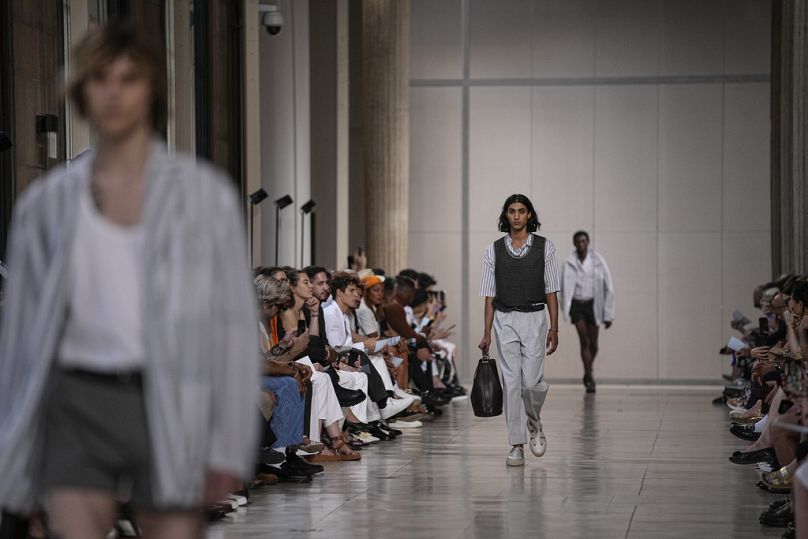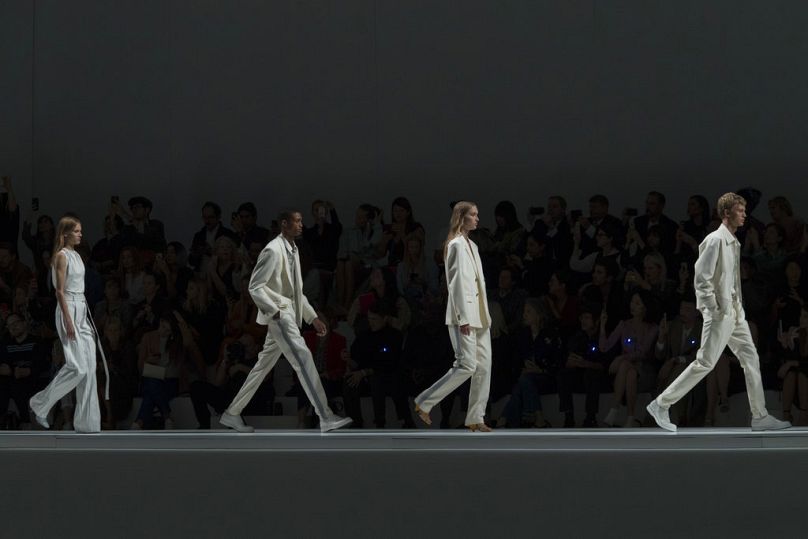Euronews Business looks at how luxury stocks such as Hermès and Kering did throughout the year.
Luxury stocks have been quite mixed this year, with decent performances at the start, but hiccups towards the middle and end.
This was mainly due to the increased cost of living and soaring inflation in several European countries eroding away disposable income. The customary holiday and Christmas surge in sales has also not come in as expected.
Consumers have been moving towards more practical and moderately priced goods in an attempt to save a few extra pennies. Second-hand and more sustainable gifting practices have also contributed to this dampened sentiment.
At the time of writing, LVMH surged 9.53% this year to $810 (€739.5) mainly propped up by robust performance in the first quarter, especially in Japan and Europe. The lifting of restrictions in some of the biggest markets such as China at the beginning of the year also contributed to this, as sales rebounded.
However, towards the latter half of the year, demand for its high-end wines and spirits plummeted considerably. One of the reasons for that is Hennessy Cognac making up almost 30% of the division, thus dragging the whole segment down when sales of cognac proved to be disappointing. This was mainly seen in China and North America.
Rising geopolitical uncertainties have also gone a long way in dampening consumers' willingness to buy further.
According to Pauline Brown, LVMH's North America ex-chairwoman, "Luxury goods and purchases is a psychological purchase. Nobody needs a glass of champagne, nobody needs a watch or a diamond necklace. In order for you to buy it for yourself or as a gift, you really have to be in the right mood state. When we see atrocities happening, the appetite to spend on what might be perceived on frivolous goes way down."
LVMH owns brands such as Fendi, Christian Dior, Marc Jacobs, Stella McCartney, Givenchy and more.
Kering dropped 16.2% throughout this year to €402. One of the biggest contributors to this was investors having increased doubts about the company's decision to reboot Gucci. This is being done under the keen eye and vision of designer Sabato de Sarno, who brings years of experience at Prada and Valentino.
However, not all fans are convinced, with more than a few feeling as if this new shift in direction could erode some of Gucci's iconic traits, such as bright rainbow shades. The company has also recently taken over a 30% stake in Valentino, and is rumoured to now have its sights set on acquiring Creative Artists Agency, a Hollywood talent agency.
This may have further spooked consumers. However, Kering has also taken some steps in appeasing consumers, by tightening its sourcing guidelines, in an attempt to move closer to its sustainability goals.
Apart from Gucci, Kering owns brands such as Bottega Veneta, Alexander McQueen and Balenciaga, amongst others.
Hermès soared 37.3% to €1,996 this year, propped up by a strong third quarter, despite the company raising prices by around 7% globally and about 3% in the US, to keep up with increased production costs.
However, the company still saw robust sales of its beloved Birkin handbag, at around $10,000 each, largely due to which Hermes manages to weather most economic storms. The company was also little impacted by declines in footfall, as it saw sales surging by about 18% in Europe, mainly because of tourists, and 20% in the US.
Crystal Saint-Louis, John Lobbe and Le Crin are some of the brands Hermes owns.
Prada, following some ups and downs, is currently trading around the same price as it opened the year, at €5.2. The brand struggled somewhat in the US, but this was balanced out by strong performances in Europe and Asia. Miu Miu's rapid growth also contributed significantly to this growth.
In the US, however, the brand saw a 1.3% fall in the first nine months of the year, especially due to rivals Kering and Hermès providing tough competition. Nevertheless, slowing economic growth in the US, along with higher interest rates putting pressure on consumers also likely contributed to this.
EssilorLuxottica inched up 6.74% to €181 this year, following solid third-quarter results, which saw revenues jumping about 5.2% year-on-year. It also joined hands with Meta, to launch the Ray-Ban Meta smart glasses recently.
The company will also be creating a new eyewear range for Moncler, as well as having recently invested about €400 million in a new eyewear facility in Thailand. EssilorLuxottica also signed a 10-year licensing agreement with Jimmy Choo earlier this year.
However, the company has also been accused of inflating sales in an antitrust case, as well as fined for non-compliance in Turkey.
Apart from Miu Miu, EssilorLuxottica also owns Sunglass Hut, Michael Kors and Burberry amongst others.
Hugo Boss increased 22.8% to €66 this year, following the company beating analyst estimates in the third quarter of the year, with revenues increasing 15% year-on-year, boosted by both menswear and womenswear. Growth in China was also quite strong.
The company was also further supported by a jump of 25% in its digital channels, whereas its brick-and-mortar revenues grew about 8%. This was mainly due to increased demand for the brand's fall and winter merchandise. Buoyed by these promising results, the company has also reiterated its top and bottom-line full-year guidance for fiscal year 2023.
Ralph Lauren climbed up 35.4% to €133 this year, mainly boosted by its Next Great Chapter: Accelerate plan. This plan focuses on elevating and energising the brand as well as focusing on the key cities where the company already has a strong client base and presence.
Lower freight charges, as well as a balanced geopolitical and channel mix, have also contributed greatly to this growth.














